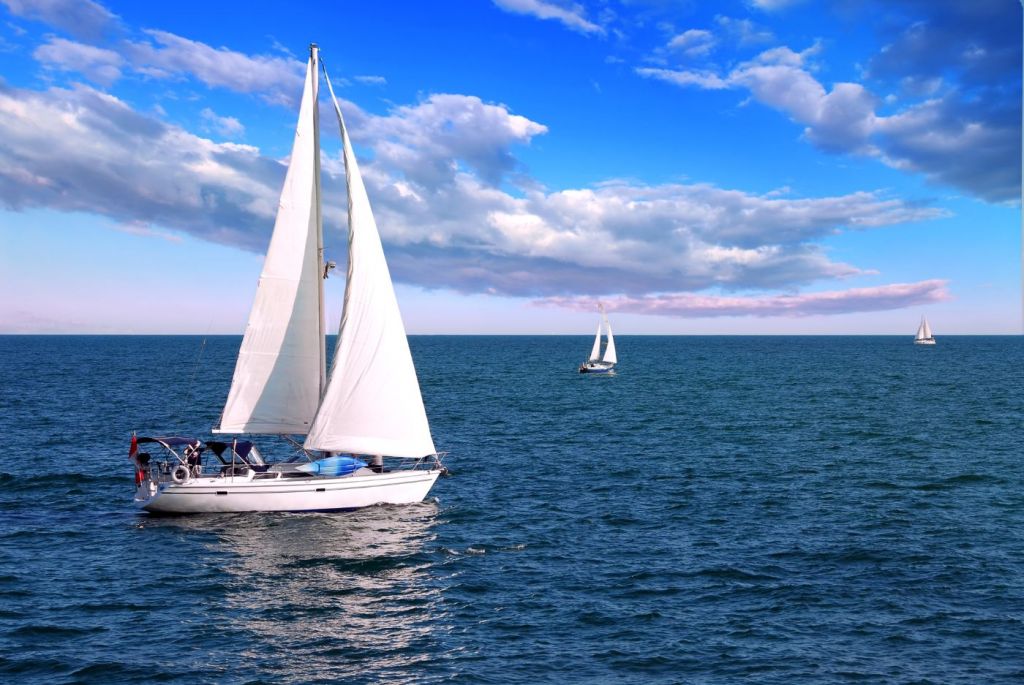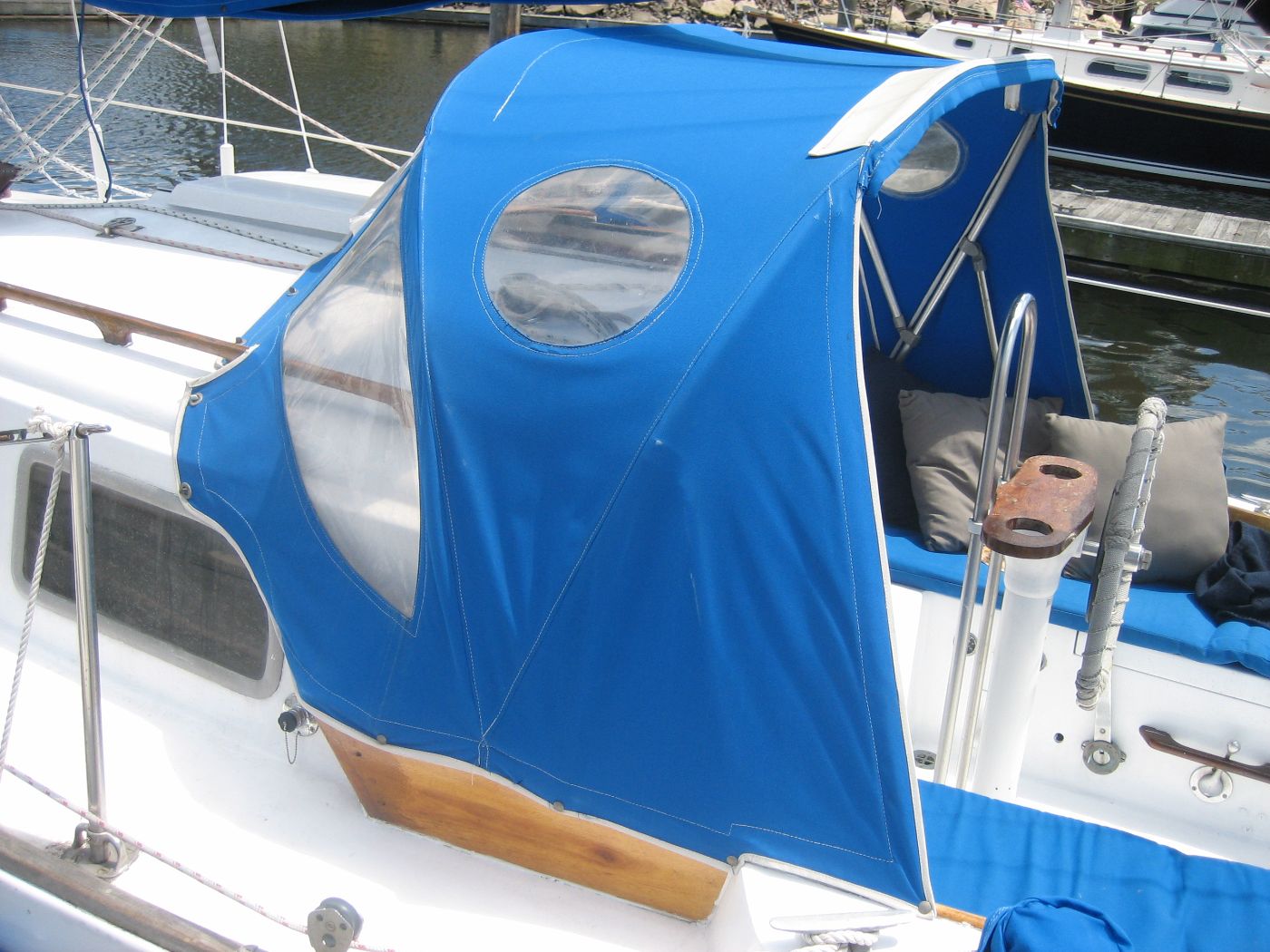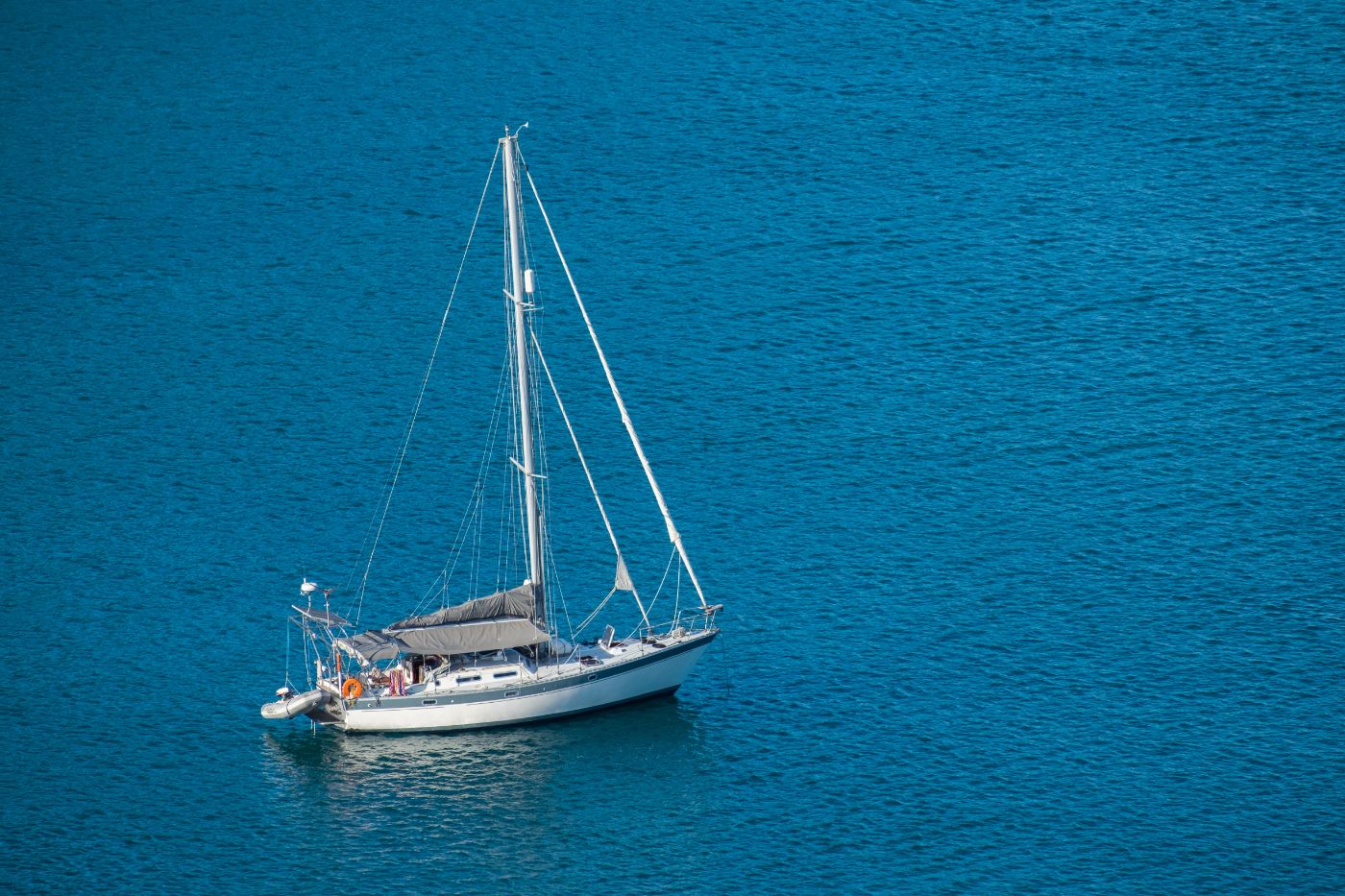Can You Sail With a Bimini Top Up?
Many boats have two pieces of external canvas added to them by owners - the dodger and the Bimini. They're different in purpose and design, but both can increase your comfort on the water.
You often can sail with the Bimini top up, unless it interferes with the boom, has an open-ended front, or if it's foldable. These Biminis are not set up well for sailing. Biminis that are supported by rigid struts and attach to the dodger can handle 50 knots of wind without problems.
If you're reading this because you're considering adding some canvas to your cockpit, your timing is good! If you're scratching your head about if you need unfold that thing on your new boat and put it up when you sail, stay tuned because we'll help you figure it out.

When Shouldn't You Have the Bimini Up?
Wind is the big killer of a Bimini that isn't rigid enough. If you're expecting nothing but light air (or worse...motoring) you're not likely to have troubles with your Bimini, no matter how it's constructed. You'll enjoy the break from the sun beating down on you in slow conditions.
But if you are expecting breeze on your trip or in your anchorage, fold the Bimini up and secure it. You do not want to deal with it when you're under way, it's better to zip it up and put it away before things get breezy.
Bimini Versus Dodger
Before we get into a serious discussion about boat canvas, we need to be clear on terms. Many sailboats have a Dodger, whereas a Bimini is an option many boats do not have. So what's the difference?
Biminis and dodgers are often, but not always, made from marine canvas stretched tight over metal tubing. Stainless steel is most typical, but other options are available. Marine canvas products such as Sunbrella repel water and resist ultraviolet degradation and are excellent choices for Bimini and dodger material.
A Dodger is installed forward of the companionway and protects the companionway and to some extent the cockpit from spray and waves. A canvas dodger will keep most of a wave from washing down the companionway and into the cockpit and spray from hitting the passengers under it. Hard dodgers like we have on our boat will take a full-sized wave over the top while keeping us dry.

"Bimini" is capitalized and dodger is not. The name derives from the Bahamian island of Bimini, where we these sun covers were used, so capitalization isn't improper.
A Bimini is primarily a sun shade and provides minimal protection from wind and waves. Many Bimini tops are open at the front, and they don't have sides. So on a moving boat you'll get some protection from spray and rain, but it's not the primary purpose.
Hard dodgers and Biminis are also possible, though if they aren't integral to a boat's construction they need careful engineering and can not be removed unless designed specifially to allow it. A few boat manufacturers offer a hard dodger option, though a hard Bimini is almost always a post construction add-on by the owner.

Why Have a Bimini?
If you sail in the tropics or anyplace with a lot of sun, a Bimini is a nice comfort feature. Even in more temperature places like New England, having sun shade in the cockpit in the middle of August is welcome. It the tropics it's pretty much obligatory.
You can make do with a larger dodger instead of a separate Bimini, but the headroom of a dodger is a little lower than a Bimini. Many Bimini covers are set up to collapse for stowing when they aren't needed.
One other use for a Bimini for cruising sailors - some have installed solar panels on top of their Biminis. This works best with hard Bimini, but can work with a sturdy steel frame.
Good Bimini Features for Sailing
Our current boat has a hard dodger, we've spent years in the tropics, and we have a Bimini cover that runs from the hard dodger all the way to the back of our center cockpit. We leave it up all the time, and it's not designed to collapse and store of the way.
One one of our earlier boats, we never put the Bimini up when we sailed. We left it folded up and strapped against the backstay in a cover until we arrived at our destination, then we'd unfold it to cover the cockpit.
So what was different between the two?
To be for good sailing, your Bimini should have the following features:
- Connection to the dodger. An open front Bimini will catch air, just like a sail. Going up wind into the breeze, with an open front it will act like an airplane wing as the wind picks up and lift and shake th canvas.
- Forward and backward bracing on the frames. Many foldable Biminis don't have strong attachments to stop fore and aft movement because it makes them harder to deploy and fold up - think snaps and toggles instead of screws and bolts. Some may have extra straps or struts you can connect to stabilize the cover in these directions, or zip-in clothes to connect them to the dodger.
- View port so you can see the main. Sail trim is hard enough, right? An isinglass window in the middle a Bimini lets you get a look at the mainsail from the helm or trimming positions.
- Visibility forward should not be blocked completely. A Bimini over the whole cockpit can allow visibility forward over the dodger, so consider using isinglass connectors if there's a height difference to make a window you can see through when standing.
- It should be clear of the boom. You don't want your boom tearing your Bimini off in a gybe, or even during a normal tack. There should be enough clearance between your boom and the top of the Bimini so you can trim the main on any point of sail.
Our current Bimini doesn't fold up, it has rigid struts on the aft end of it supporting it from the deck, and the forward framing screws to our hard dodger. Sailing with it in fifty knots of breeze wasn't a problem, it's a very solid frame.
The Bimini on the older boat could not have handled that much breeze, it would have collapsed or shaken up enough to damage the canvas or the frame. If we zipped in the strip to close the gap with the dodger it would help, but that hurt visibility. It was permanently attached, but folded up out of the way.
Designing a Bimini
While many small production power boats can find ready made Bimini covers, most sailboat canvas installations are custom jobs. It is possible to make your own Bimini. More than a few sailors with the skills have saved money doing that. Even if you hire a canvas professional, you'll lay out what you want and help design the canvas to suit your needs.
A skilled canvas builder will ask you many questions, but prepare to describe what you're thinking of. They will offer solutions they know work for what you want.
How will you use the Bimini?
Do you want to sail with it up all the time? Is this is a requirement, or do you prefer to move it out of the way easily? If you live in Florida or Texas, you'll have a very different answer from a sailor in Maine or the Pacific Northwest.
Also think about how much of the cockpit you want to cover. Covering the helm station is expected, but running it across a large cockpit to connect to a dodger will cost more and take more support.
How much headroom do you require?
Our Bimini is too tall, the next time we replace the canvas we're shortening the frame first. I'd love three or four more inches of clearance under the boom to add some solar panels on top of it, and I don't need over a foot of headroom at the helm.
But too-short canvas can make cockpit access awkward, so there's a balance of what's good for working around and what gets in the way.
How will it attach to your boat?
This is an important question if you hope to sail with your Bimini up, since you need to secure it well from all directions; it will be more than just a removable sunshade. Connection to a dodger helps. Sometimes straps can run across that gap for fore/aft stability.
What construction materials?
Stainless steel tubing and Sunbrella are the de facto standards for soft boat canvas. Alternative products like aluminum and other brands of marine canvas save money or offer different performance characteristics. Hard Bimini construction has a variety of construction options to balance weight and strength.
Think about optional extras
One of our favorite Bimini add-ons for cruising in the early spring and fall in New England was a set of clear, zip-down sides which snapped to the cockpit edge. Even without a back, the sides added a windbreak and made the cockpit more comfortable at anchor in cooler weather.
A similar option we wanted was mosquito screening to enclose the cockpit under the Bimini. We never did it, but with zippers installed along the sides for the wind breaks and across the aft edge, it was an option we could have done later.
Did you find the answer to your specific question?
👍 1 👎 0
Leave a comment